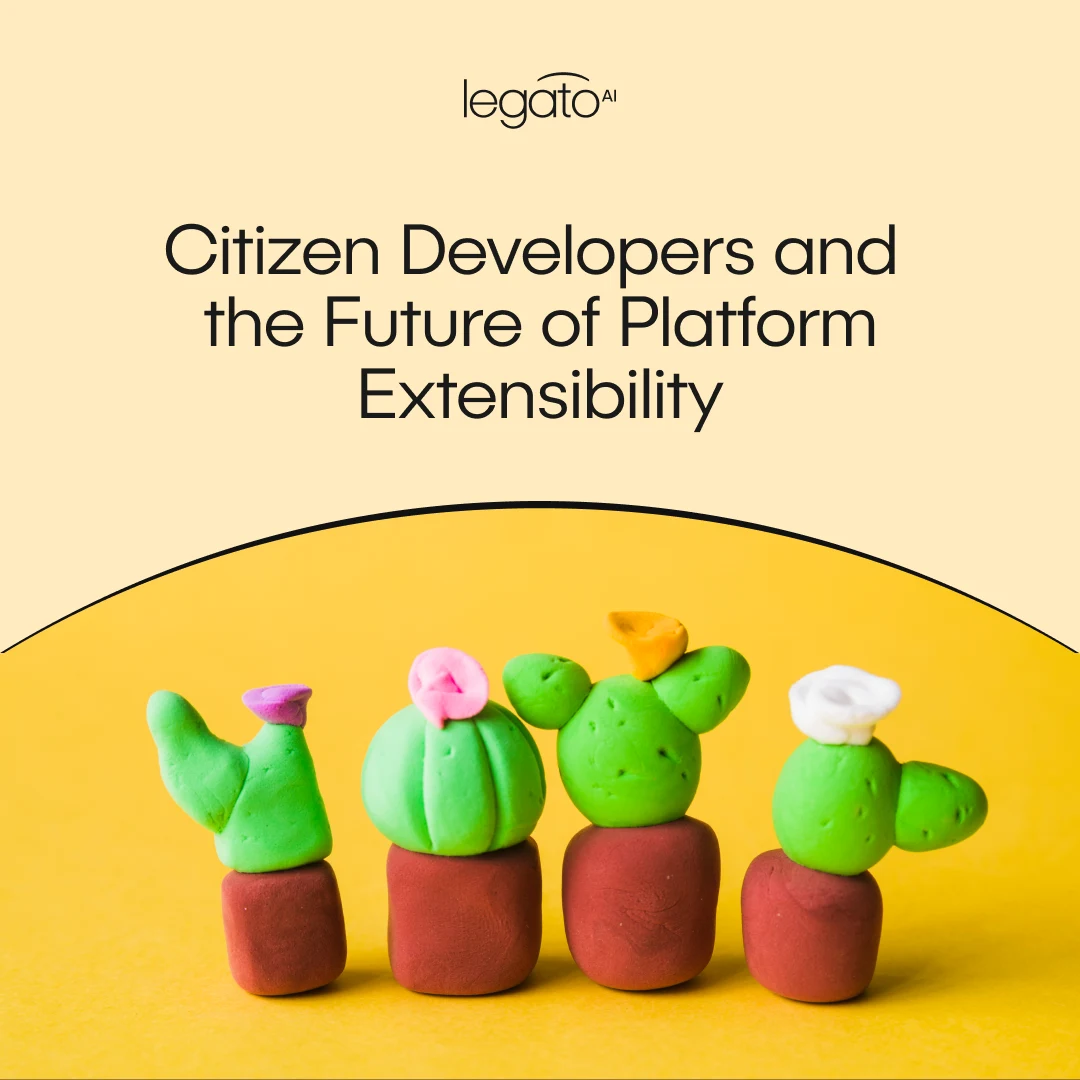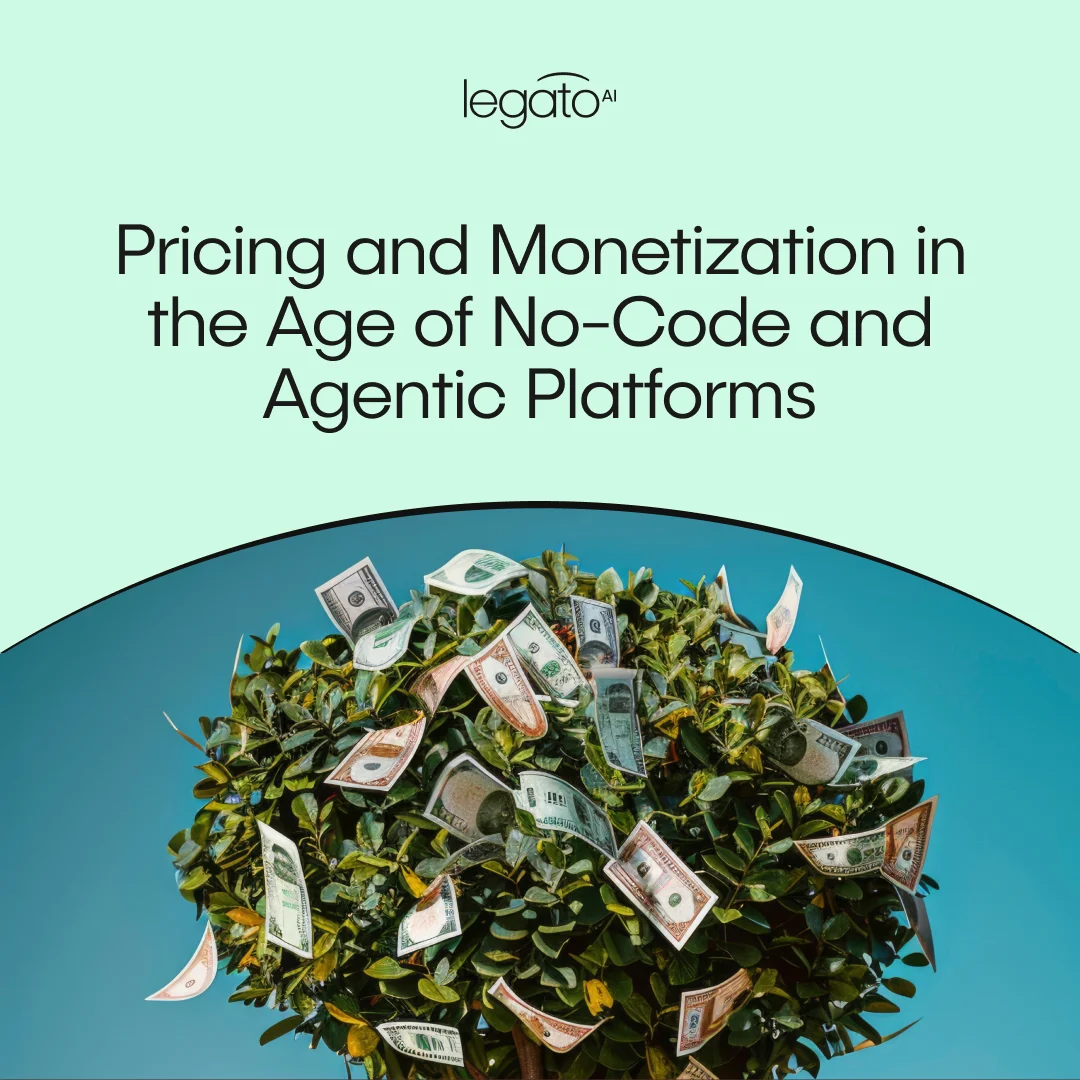Agentic Code Generation: Endgame of Platform Extensibility

In 2025, we’re seeing early signs that agentic AI is writing software itself and not just assisting with code snippets. Investors poured over $7.5 billion into AI-powered coding startups this quarter. In fact, they are betting that autonomous code creation is the next frontier.
Many B2B platforms today are focused on workflow automation and no-code agent builders. Those are important stepping stones, but they aren't the endpoint. The real goal is agentic code generation. It lets users describe what they want in plain language and get ready-to-use software or micro-apps built automatically.
Platform leaders face a pivotal choice: will you stop at agent builders, or will you build toward full AI extensibility? Platforms that ignore agent code generation risk falling behind or losing users to third-party tools. In this article, we will discuss various aspects of agentic software creation in detail.
What Is Agentic Code Generation?
Agentic AI for code generation refers to the use of multi-agent AI systems that collaborate to autonomously create, test, and deploy software. Unlike low-code or no-code solutions that require assembling blocks, code generation agents act as virtual software engineering teams. They understand intent, plan the architecture, generate code, run QA, and deliver finished components.
The motivation is simple but profound: eliminate the technical barrier entirely. For instance, a sales manager should be able to request a new lead routing tool, or an HR leader a new onboarding workflow, without needing a “citizen developer” mindset. With code generation AI agents, creation becomes as natural as a conversation. This means that even a sales manager requires no coding skills, no low-code training, and no expertise in prompting.
Why Platforms Shouldn’t Stop at Agent Builders
Agent builders and workflow automation are important. They empower a subset of users, often called citizen developers, to extend the platform with no-code tools. But citizen developers remain a minority: they are technically curious business users with above-average digital skills.
If extensibility stops here, the platform risks two outcomes:
- Limited adoption: Only a fraction of the customer base participates in the building process.
- External leakage: Ignoring agent code generation risks falling behind and losing users to other tools.
The opportunity for B2B platforms lies in embedding full AI extensibility. This allows every user to create on the platform through agentic code generation. The system adapts to users, building software in the background while keeping platform control.
The Technology Foundation for No-Code Agentic Code Generation.
Delivering on this vision requires solving multiple technical challenges simultaneously. The components below, inspired by real-world research and architecture patterns, illustrate the complexity vendors must understand.
Multi-Agent Systems (MAS): A Virtual Engineering Team
An effective code generation agent is not a single model but a coordinated multi-agent system. Think of it as a world-class engineering team replicated in software. Agents take on specialized roles, collaborate, and iterate until the outcome is production-ready. By working together in this way, the system delivers outputs that approximate the quality of human engineering teams only faster, more consistently, and at scale.
Grounded Knowledge: Context and Domain Awareness
Generic AI models often fail when applied to specialized domains because they lack context. For agentic AI for code generation to succeed for B2B platforms, every agent must operate with embedded domain and platform knowledge. That means being aware of:
- Platform-specific APIs and seamless integration patterns.
- Domain rules (finance, healthcare, manufacturing, etc.).
- Proven engineering practices.
This knowledge layer must also be dynamic, continuously refreshed as platforms evolve. Without grounding, code generation outputs risk being naive or misaligned with real-world requirements.
Continuous Feedback Loops: Expanding Coverage
The feedback loop is not just about fixing accuracy. Instead, it expands the system’s coverage and its ability to handle an increasing number of scenarios over time. Each software creation, successful or not, should enrich the system’s knowledge.
When gaps are identified, they are fed back into the engine. Hence, it ensures the platform can handle complex and broader use cases tomorrow that it cannot handle today.
Scalability: Running Thousands of Creations in Parallel
B2B platforms operate at scale. Embedding agent code generation means handling potentially thousands of micro-apps or extensions running simultaneously. The execution layer must be optimized for compute efficiency, governance, and cost management. Without it, the risk is runaway infrastructure costs or operational bottlenecks.
Conversational Interfaces: Creation as a Dialogue
The user-facing experience is as important as the back-end complexity. For democratization to be real, the interface must feel like briefing a colleague, not configuring a tool. Business leaders should receive clear, opinionated outcomes, while technical partners may want detailed explanations.
In practice, this means building role-aware conversational interfaces that adapt language, tone, and detail based on the user. This is what makes code generation AI agents accessible to everyone, not just power users.
The Risks Vendors Must Address
Embedding agentic AI for code generation also comes with risks that platform leaders must anticipate:
- Security and trust: Each generated component could be a new entry point. Without embedded governance and monitoring, extensibility creates vulnerabilities.
- Pricing clarity: Usage-based pricing must be transparent. Confusion over what constitutes an “agent action” or a “conversation” hinders adoption.
- Adoption gap: If interfaces are too complex, only a minority of users will use them. The goal must be universal accessibility.
- Data visibility: Vendors must govern usage data to understand adoption patterns and maximize revenue potential.
From Citizen Developers to Platform Creators
Citizen developers are an important bridge for the first wave of business users empowered to build. However, they are not the ultimate goal. They represent a skilled minority within the broader customer base. The real transformation comes with agentic code generation: when every user becomes a creator simply by describing what they need.
At that point, the distinction between “business users” vs “citizen developers" fades away. Platforms become ecosystems where innovation is continuous and native. As SaaS platforms adopt agentic AI, the future of extensibility will hinge on striking a balance between openness and safeguards. Thereby, it will make SaaS code generation both innovative and secure.
Conclusion: Agentic AI Software Development for All
Workflow automation and agentic AI software builders are milestones, not the finish line. The real destination is agent code generation, powered by multi-agent systems, grounded knowledge, continuous feedback, and conversational interfaces.
Platforms that solve this tech stack will redefine themselves. They won’t just support extensibility for a subset of users; they will enable universal creation. And in a market where agentic AI is poised to impact every enterprise application within the decade, those that adopt code generation AI agents will secure adoption, retention, and category leadership.
FAQ: AI Extensibility for Software Creation
1. What is agentic code generation?
Agentic code generation is the use of multi-agent AI systems to autonomously design, build, test, and deploy software. Instead of users assembling development workflows with low-code tools, code generation AI agents create production-grade components directly from plain-language requests.
2. How is agentic AI for code generation different from no-code or low-code?
Traditional no-code platforms require users to assemble blocks and workflows. Agentic AI for code generation removes that barrier by turning natural language into finished software. This makes extensibility accessible to every business user, not just “citizen developers.”
3. What are the risks of agentic code generation for SaaS platforms?
Key risks include security vulnerabilities, unclear pricing models, and adoption gaps resulting from overly complex interfaces. This also includes a lack of visibility into usage data on SaaS code generation platforms. To succeed, vendors must embed governance and ensure transparent usage-based pricing. Plus, they should capture insights from usage data to maximize revenue potential.
4. Why should B2B platforms embed agentic code generation?
Platforms that don’t embed agent code generation risk losing momentum to competitors. In some cases, they may also see users turn to third-party tools. By offering native AI capabilities through no-code agentic software creation, they position themselves as ecosystems where innovation stays in-house.
5. What technologies enable code generation AI agents?
Core components include AI software creation agents that work like a virtual engineering team. They ensure high-quality outputs at scale. These components let users describe their needs in plain language.
6. What is the long-term impact of agentic code generation?
The long-term impact is full democratization of software creation. Every business user can build by simply describing what they need, while the platform handles logic, governance, and scale. This redefines platforms from tools into ecosystems of continuous, user-driven innovation.
7. How do platforms benefit from agentic software generation tools?
Platforms using agentic software generation tools can create software faster and for more users. When combined with no-code agentic software creation and AI software creation agents. These tools let anyone build software easily and make the platform a hub for ongoing innovation.



